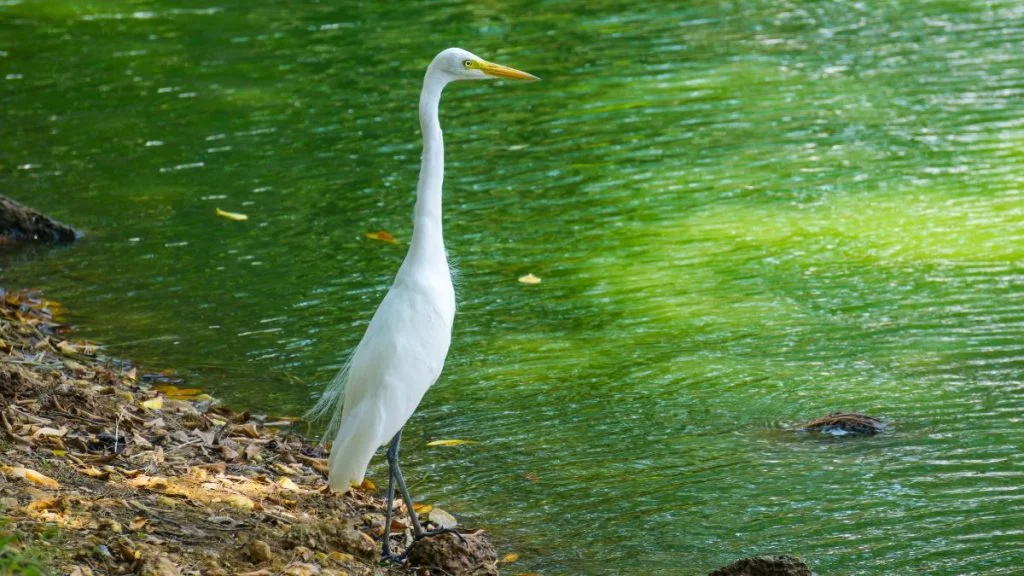Just like humans, animals come in all shapes and sizes.
Some are humongous and weigh a lot of pounds, others seem to shed off every fat as soon as they eat.
These skinny animals can be found either in the wild or close to humans, and they have their animal families and genus. They also have their unique dietary needs, behaviors, and mating process. What brings them together is their slim nature, and that’s our focus.
In this article, we’ll be looking into an alphabetical list of 30 skinny animals that exist in the animal kingdom.
We’ll analyze each of these examples of slim animals and see how they function in their respective habitats without disturbance.
These Skinny Animals are Slim and Wonderful Creatures
1. Alpaca

- Scientific Name: Vicugna Pacos
- Size: 81 to 99cm
- Animal Type: Mammal
- Diet Classification: Herbivore
- Where Found: South America
The Alpaca is one of the seven members of the Camelid family, and it is a domesticated member.
It looks a bit like a camel and a lot like an Ilama, all of which are also under the Camelid family. It is a social animal, and the individuals live in herds.
The Alpaca’s coat has fiber that keeps warmth, and it uses it to protect its offspring. The fiber is the main reason Alpacas are being discovered.
It is used to make blankets, sweaters, scarfs, gloves, and other outfits that can protect one from the weather.
2. Arboreal Minute Salamander
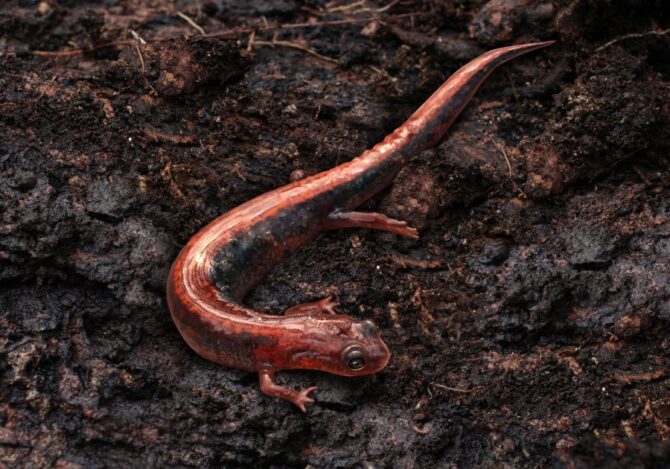
- Scientific Name: Thorius Arboreus
- Size: 0.60 to 0.79 inches
- Animal Type: Reptile
- Diet Classification: Carnivore
- Where Found: Worldwide
The Arboreal Minute Salamander can also be referred to with its scientific name Thorius Arboreus.
It is a tiny, skinny salamander not up to an inch, and its pointed snout makes it even slimmer.
The Arboreal Minute Salamander can only be found in Sierra de Juez, Mexico, and it is critically endangered due to agricultural practices.
This species is a carnivore, and it often feeds on worms and invertebrates. It isn’t limited to those, however.
The Arboreal Minute Salamander can also eat snails and fish. Some prey on other salamanders too.
3. Bee Hummingbird

- Scientific Name: Mellisuga helenae
- Size: 5.5 to 6.1cm
- Animal Type: Bird
- Diet Classification: Omnivore
- Where Found: Island of Cuba
The Bee Hummingbird is the world’s smallest bird, and it can easily fit in a palm.
This type of bird is a colorful animal that appears to many like a jewel. It is often found on the Island of Cuba.
This bird’s diet consists of the occasional insects and spiders, alongside nectars. Its conservation status is Near Threatened, possibly due to habitat loss.
4. Brookesia Micra Chameleon
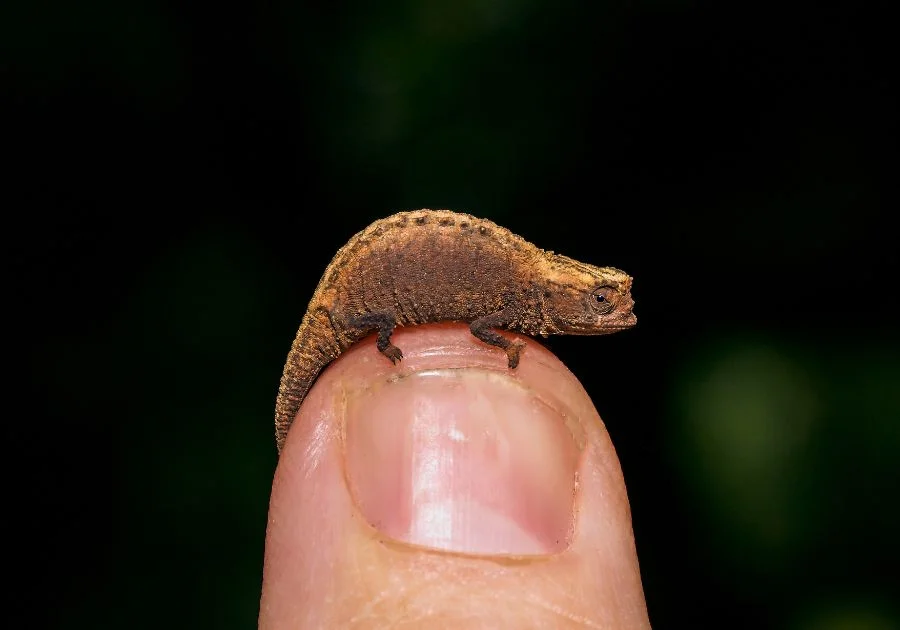
- Scientific Name: Brookesia Micra
- Size: 1.1 inches
- Animal Type: Reptile
- Diet Classification: Carnivore
- Where Found: Madagascar
The Brookesia Micra Chameleon lives in Madagascar and is a tiny lizard species, tinier than many other chameleons you might meet.
This animal should be able to comfortably fit in your palm as it is just an inch in height and weighs light.
The Brookesia Micra Chameleon used to be the smallest of its kind and Top 10 of the smallest reptiles.
The first assertion changed in 2021 when the Brookesia Nana was discovered.
5. Butterflyfish
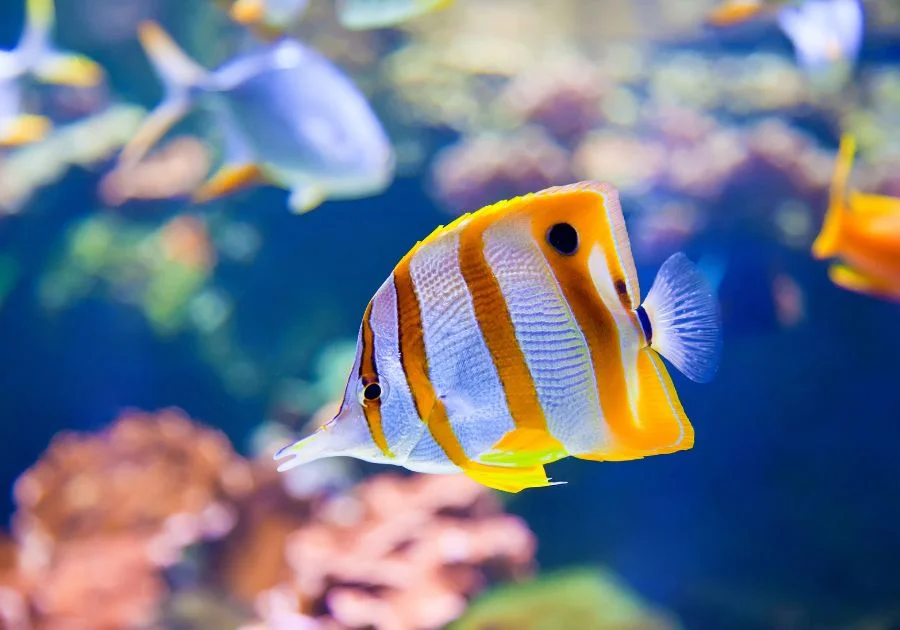
- Scientific Name (Family): Chaetodontidae
- Size: 5 to 9 inches
- Animal Type: Fish
- Diet Classification: Omnivore
- Where Found: Atlantic ocean, Indian ocean, Pacific ocean
The Butterflyfish is both beautiful and slim, and the name is a perfect description of its physical appearance.
It lives close to the reefs on islands, and because food isn’t abundant in those reefs, the Butterflyfish had to adapt to its environment. It eats very little and gets satisfied with ease.
The Butterflyfish is a carnivore, and it feeds on invertebrates like worms, crustaceans, and sponges. Some species can eat algae, making them omnivores.
6. Cheetah

- Scientific Name: Acinonyx Jubatus
- Size: 67 to 94 cm
- Animal Type: Mammal
- Diet Classification: Carnivore
- Where Found: Africa
The Cheetah is a very popular mammal from the cat family and is considered the fastest animal in the world.
It is also a slim animal, most times even slimmer than your kitty. The slimness is a direct result of its environment.
As an inhabitant of grasslands and savannahs, food is always hard to come by. Survival means being slim.
This is also why the Cheetah runs very fast. Their major prey is the gazelle, and gazelles are fast. Thus, the Cheetah had to adapt if it had any hope of eating.
Cheetahs often hunt during the day, especially in habitats they share with other bigger nocturnal predators. They do not like the competition.
7. Chihuahua

- Scientific Name: Canis familiaris
- Size: 6 to 9 inches
- Animal Type: Mammal
- Diet Classification: Omnivore
- Where Found: Mexico
The Chihuahua is a member of the dog family, and it can be domesticated.
It hails from Mexico where food was scarce, and to adapt to the environment, it became slimmer.
The Chihuahua is currently a popular family pet and its range is worldwide. It is loved for its energy, spunk, and playfulness.
The Chihuahua is an omnivore with a wide diet. It also has a long lifespan getting up to 20 years.
8. Dwarf Gecko
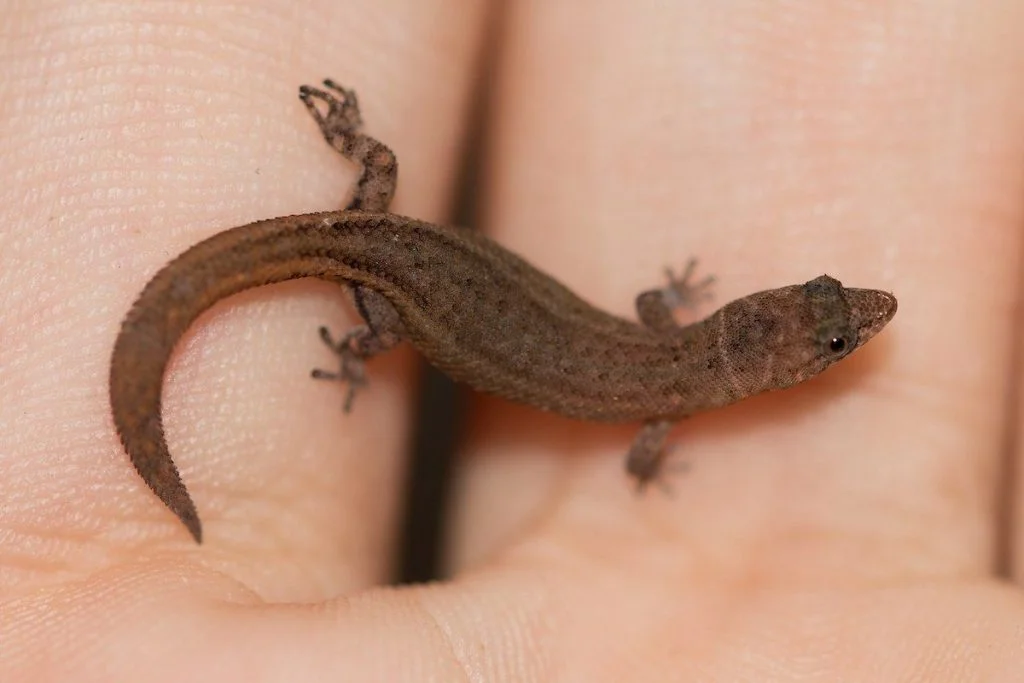
- Scientific Name: Sphaerodactylus Ariasae
- Size: 2 to 3 inches
- Animal Type: Reptile
- Diet Classification: Carnivore
- Where Found: Africa and Madagascar
The Dwarf Gecko can be found in the African and Arabian deserts. As you can very well imagine, a desert is a dry place with little food.
The Dwarf Gecko has to adapt to such an environment by being slim. There are over 72 species of dwarf geckos in existence today.
As expected of a reptile, the Dwarf Gecko feeds on insects, worms, and larvae.
Some of them live close to humans and can even be kept as a pet. They live longer than the size suggests, getting up to 10 years.
9. Dwarf Lantern Shark
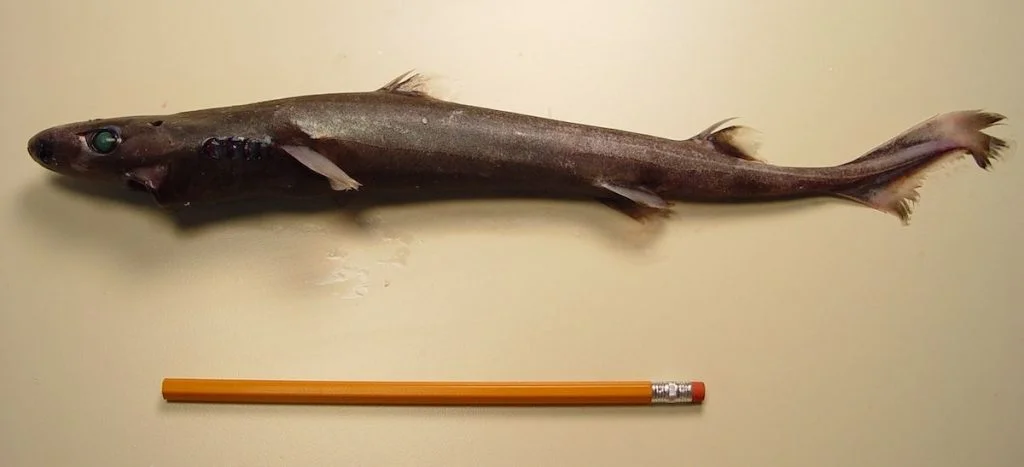
- Scientific Name: Etmopterus perryl
- Size: 20cm
- Animal Type: Fish
- Diet Classification: Carnivore
- Where Found: Pacific Ocean, Hawaii
The Dwarf Lantern Shark has similar features to other sharks, except that it is slim.
It is considered the smallest shark in the world, not getting up to 10 inches in length. Because of its small size, it has no commercial value to humans.
However, it can be wrongly caught as a bycatch. Its conservation status is Least Concern, though.
The Dwarf Lantern Shark lives in the Atlantic ocean and tends to make a home out of the depths. To adapt to its environment, it has to be small, which it is.
10. Eel
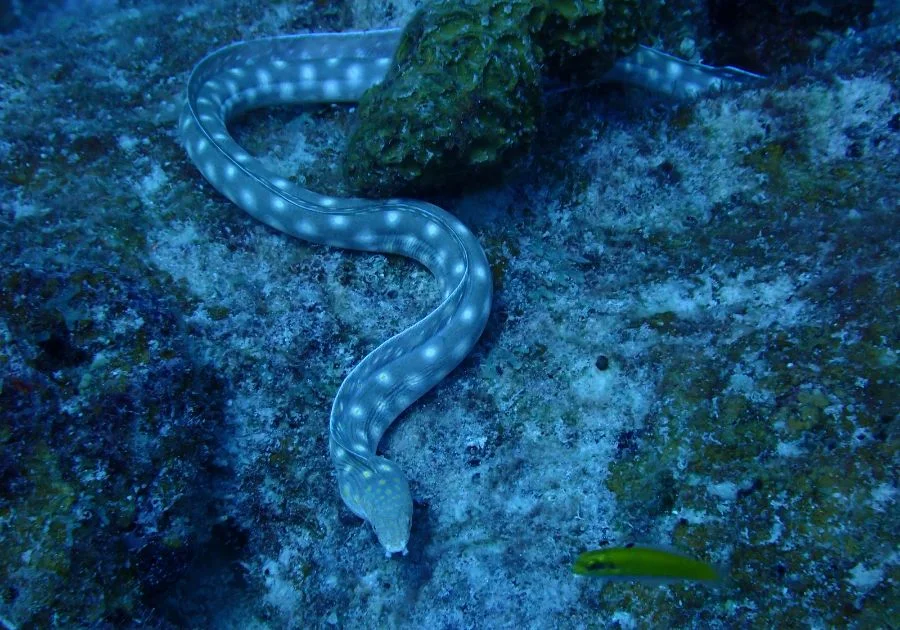
- Scientific Name: Anguilla Japonica
- Size: 5cm
- Animal Type: Fish
- Diet Classification: Carnivore
- Where Found: Worldwide
The Eel is another popular slim animal, and one with a bad reputation because of its ability to conduct electricity.
This isn’t a universal quality, however, and while the Eel is ferocious, you might never meet one unless you decide to go underwater. What’s more, Eels don’t attack unless provoked.
Only its prey has every reason to be afraid. The Eel is a strong predator, and it will hunt down small fishes and crustaceans.
It can also eat insects when fed. Eels are a part of some cuisine, but they must be well cooked lest they remain inedible.
11. Etruscan Shrew

- Scientific Name: Suncus etruscus
- Size: 3 to 5.2cm
- Animal Type: Mammal
- Diet Classification: Omnivore
- Where Found: Mediterranean Lowlands
The Etruscan Shrew is the smallest existing mammal, and it can sit comfortably on a thumb. Its weight falls short of 2g on average.
It lives in the forest of Europe, where its small and slim physique helps it adapt to its environment.
Etruscan Shrews are solitary animals, except for periods when they want to mate (who would want to be alone then?).
They are protective of their territory, regardless of their small sizes. Also, they are predators.
Their common prey is larvae, insects, earthworms, grasshoppers, etc.
12. Ferret

- Scientific Name: Mustela putorius furo
- Size: 38cm
- Animal Type: Mammal
- Diet Classification: Carnivore
- Where Found: North Africa, Western Asia
We hinted at ferrets while on the subject of polecats, and both species share a lot of similarities.
The Ferret is often considered a domesticated version of the polecat, which would explain why they are alike.
Ferrets, polecats, and the stoat all belong to the Mustelidae (weasel family).
Ferrets may be domesticated, but they do not make easy pets, contrary to what people think.
They bite easily and may put kids at risk, so if you’ve got kids, do not get a ferret. It will also prey on any small animal around.
13. Great Egret
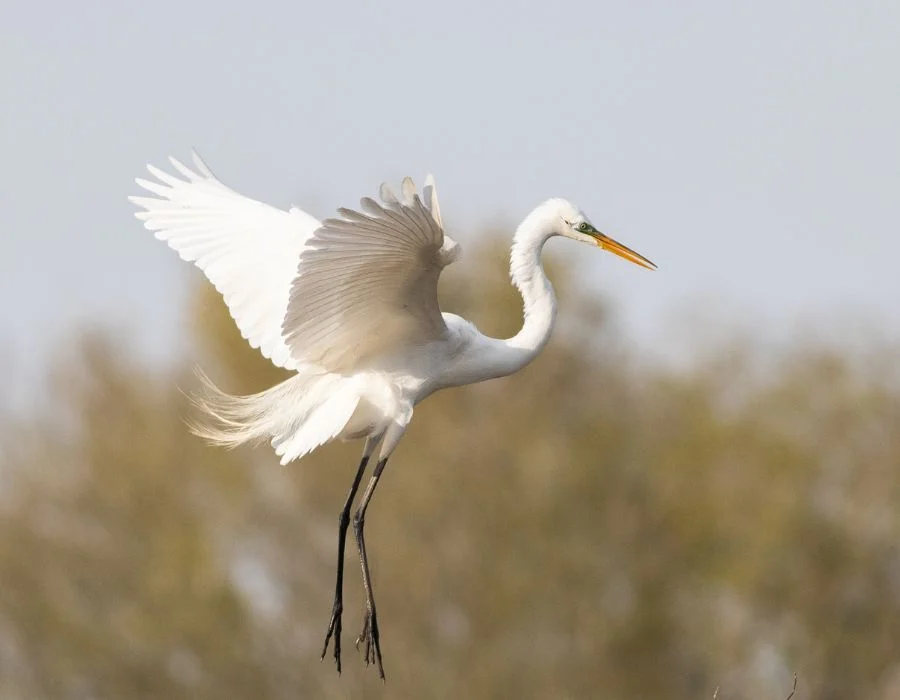
- Scientific Name: Ardea Alba
- Size: 80 to 100 cm
- Animal Type: Bird
- Diet Classification: Carnivore
- Where Found: Worldwide
The Great Egret is hard to miss on any skinny animals list. Its slim legs, long necks, and overall white color distinguish it from other birds.
While it prefers a tropical habitat, it can be found worldwide. It also loves being close to water, and that’s where it can easily be seen.
The Great Egret is carnivorous by nature, and it feeds mainly on fish, frogs, small mammals, and reptiles.
It uses its long beak as a weapon, striking the prey down as it comes close.
It sometimes stalks the victim or uses the lizard’s method of letting the victim come to him.
14. Lizards
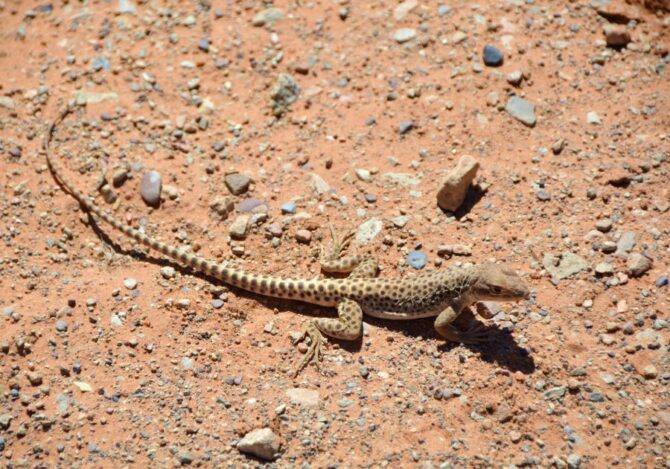
- Scientific Name: Lacertilia
- Size: 2cm
- Animal Type: Reptile
- Diet Classification: Carnivore
- Where Found: Worldwide
Lizard is the most popular group of reptiles, with over 6000 species and a range that covers all continents, excluding Antarctica.
Some lizards have limbs and move side to side, others are more like snakes, slithering on their bellies.
The males have brighter colors than the females and are quite territorial.
Lizards can adapt to harsh environments, which explains the slimness of the species.
Lizards are primarily carnivorous, the passive kind. They tend to wait for the prey to approach, then strike.
Smaller lizard species feed on insects, while big ones like the Komodo can eat mammals.
15. Mantis

- Scientific Name: Mantodea
- Size: 1 to 6 inches
- Animal Type: Insect
- Diet Classification: Carnivore
- Where Found: Worldwide
Also called the Praying Mantis—because of the position of its front legs—this insect is distributed around the world except for Antarctica, just like the Stick Bug.
Both insects share a common trait: their colorings help them blend with nature. The Mantis can easily get mixed up in trees with leaves.
Those front legs aren’t meant for peace, though. The Mantis is a good predator, regardless of its 6 inches size.
The front legs are its weapons, and it is efficient at trapping prey.
Some animals it preys on include crickets, worms, larvae, and even bigger animals like spiders and birds.
Of course, the predator can also become prey, and the Mantis has a lot of enemies like frogs.
16. Meerkat
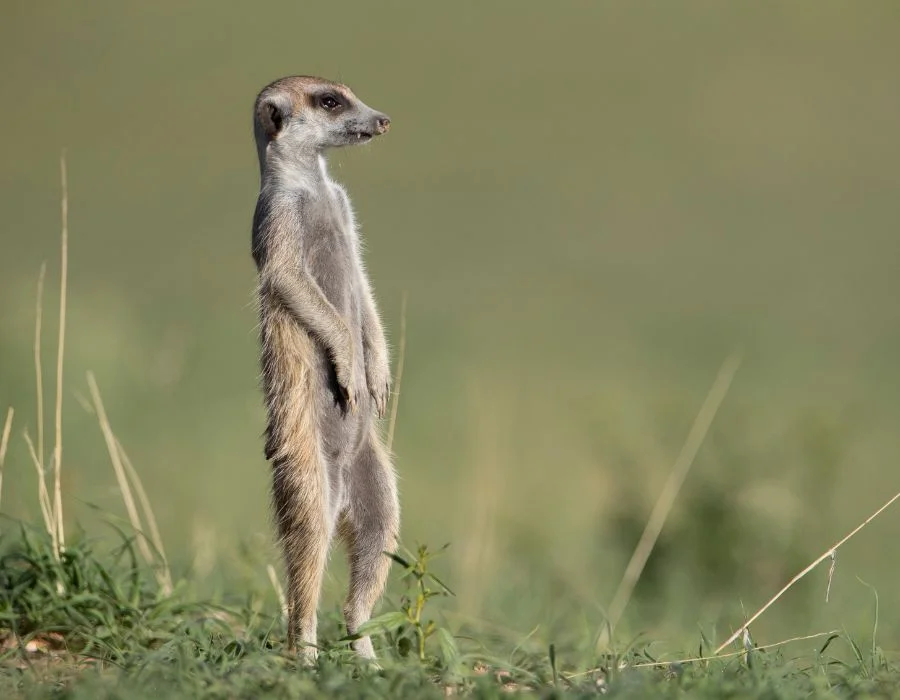
- Scientific Name: Suricata suricatta
- Size: 25 to 35cm
- Animal Type: Mammal
- Diet Classification: Carnivore
- Where Found: Botswana
Remember the meerkat Timon in the Lion King? He was a good representation of his species based on size, but not on personality.
Meerkats in reality wouldn’t want to make friends with lions. The Disney movie and some other documentaries have made the meerkat popular amongst animal enthusiasts.
Meerkats can either run on all fours or stand on hind legs, and when they do stand it’s easy to notice the skinny size.
The pointed snout and tail contribute to the overall appearance.
While they look harmless, meerkats do not make good pets and are best in their underground burrows. Like Timon, meerkats are insectivorous.
17. Mongoose
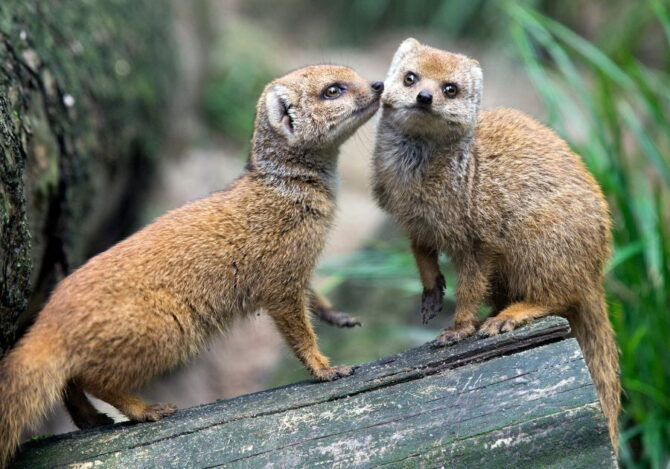
- Scientific Name: Herpestidae
- Size: 24 to 58 cm
- Animal Type: Mammal
- Diet Classification: Omnivore
- Where Found: Africa
The Mongoose is easily recognizable, and you’ve no doubt heard about it before.
It is a mammal often found in Africa, and its skinny nature helps it survive in the wild.
The Mongoose is very fast, a skill that keeps it away from predators, including human predators.
The Mongoose is a carnivorous animal, and it feeds mainly on crabs, insects, earthworms, birds, rodents, and lizards.
Because it is partly domestic, some people successfully keep it as a pet and can employ it for vermin control.
18. Needlefish

- Scientific Name: Belonidae
- Size: 3 to 95 inches
- Animal Type: Fish
- Diet Classification: Omnivore
- Where Found: Maine, Brazil
Also known as the Long Tom, the Needlefish lives in the Pacific and the Atlantic Ocean, and it is as slim as fishes can be.
Because it lives in a place where food isn’t easily found, the Needlefish has to adapt to not eating too much and swimming fast. A slim body is a result.
The fast swimming enables it to catch prey with ease. The Needlefish is carnivorous, feeding primarily on smaller fishes.
Some members also feed on crustaceans, krill, and cephalopods.
19. Pike

- Scientific Name: Esox Lucius
- Size: 16 to 22 inches
- Animal Type: Fish
- Diet Classification: Carnivore
- Where Found: North America, Europe, Asia, Siberia
The Pike is often situated in North America, Europe, and Asia, specifically in the Arctic potions. Its body is long and slender, while the head is pointed.
Altogether, the Pike is one of the long skinny animals out there. They can exist both in fresh and saltwater.
The skinny nature of the Pike makes it move through water with speed, and with its sharp teeth, this fish makes a strong predator.
It hunts for its meal, and it can camouflage while going after prey because of its grey-green clothing.
20. Polecat
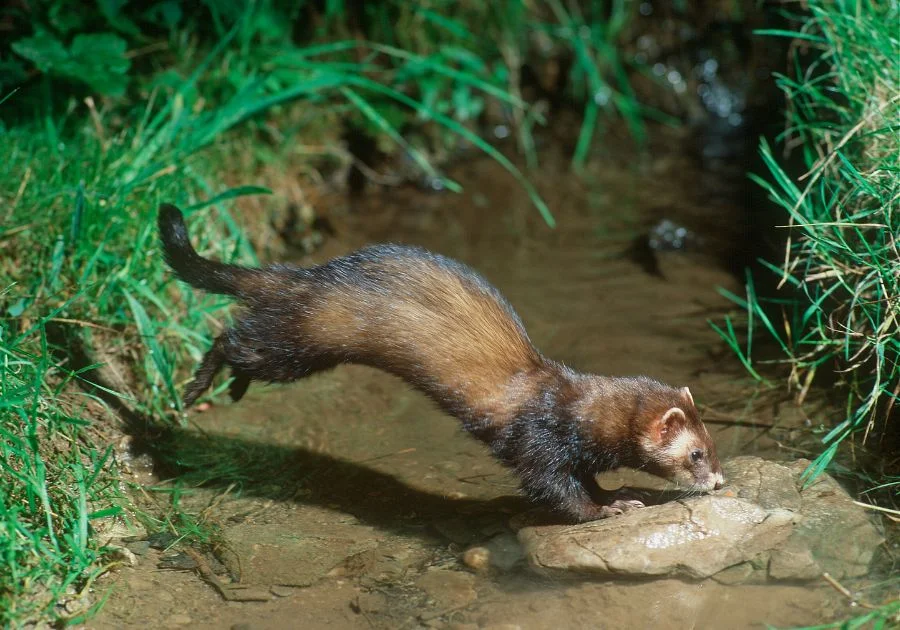
- Scientific Name: Mustela putorius
- Size: 29 to 46 inches
- Animal Type: Mammal
- Diet Classification: Carnivore
- Where Found: Wales
The Polecat looks a lot like the domestic ferrets, and because of its innocent facial expressions, some animal lovers might want to own one.
However, similar to the meerkat, the Polecat is best left for the wild. Their carnivorous diet and nocturnal lifestyle aren’t fit for a household.
What’s more, it is hard to get close to them because they release pungent odors like skunks.
The odor is its defense mechanism against predators in the wild, and from its perspective, humans are predators too.
Just be contented with admiring these slim, fluffy animals from a distance.
21. Pygmy Marmoset
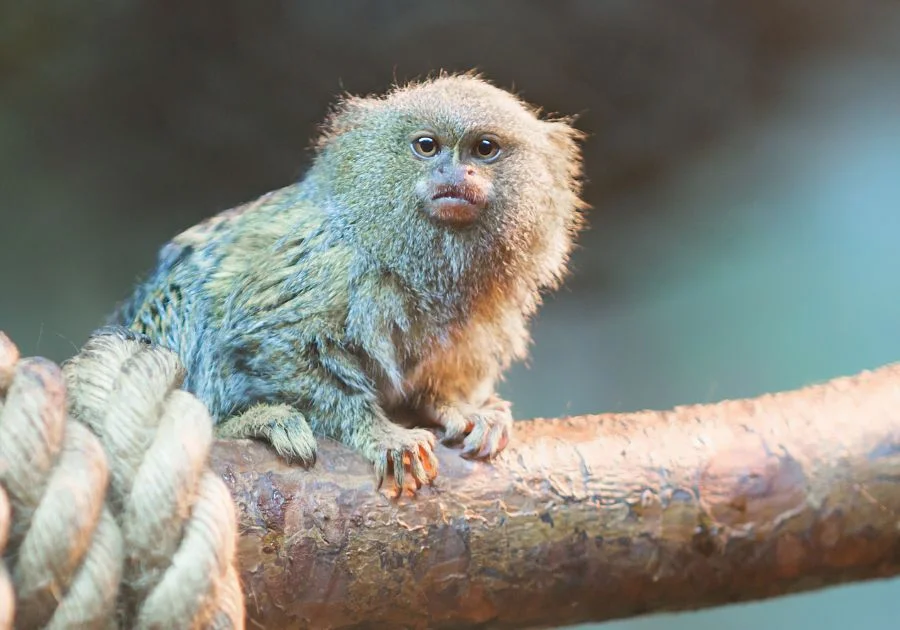
- Scientific Name: Cebuella Pygmea
- Size: 12 to 15 cm
- Animal Type: Mammal
- Diet Classification: Omnivore
- Where Found: Peru, Brazil, Bolivia, Ecuador
The Pygmy Marmoset is considered the smallest monkey in the world. It lives in Southern America, and its preferred habitat is the rainforest.
Weighing just 300g, it is also one of the smallest primates.
It is omnivorous, and due to the lack of sufficient prey in the rainforest, it has adapted to living off a little food.
The Pygmy Marmoset’s size thus gives it an advantage over other animals. It feeds on lizards, insects, and tree sap.
22. Slender Salamander

- Scientific Name: Batrachoseps
- Size: 3.5 to 4.5 inches
- Animal Type: Reptiles
- Diet Classification: Carnivore
- Where Found: USA, Mexico
The Slender Salamander is a genus of salamander species all under the lungless salamander family.
A Slender Salamander’s main physical trait is the number of toes. Unlike other lungless salamanders, the slender salamander has 4 toes on each foot.
As the family name states, the Slender Salamander has no lungs. It breathes through the skin and the thin membranes.
It is slender as a snake with toes, and it is carnivorous. The Slender Salamander feeds on insects, crickets, mites, and spiders.
23. Snakes
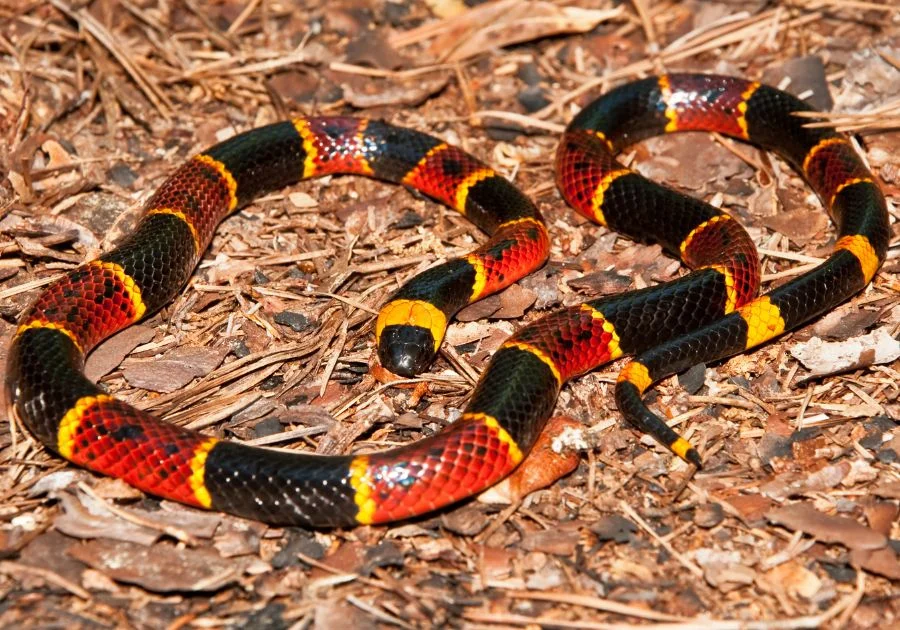
- Scientific Name: Serpentes
- Size: 1m
- Animal Type: Reptile
- Diet Classification: Carnivore
- Where Found: Worldwide
If lizards are the most popular reptiles, snakes are the most notorious. However, not all snakes are harmful.
There are the venomous ones and the large, frightening snakes, but there are also the small ones that can be kept as pets.
Snakes and lizards have a lot in common, and the legless lizard species can even pass off as snakes.
Snakes have unique joints, and some of them can easily swallow animals bigger than they are. Once the animal digests, they return to their slender form.
These snakes are usually not venomous. The venomous kind uses their venom to kill prey, and can also use it for self-defense.
24. Stick Bug
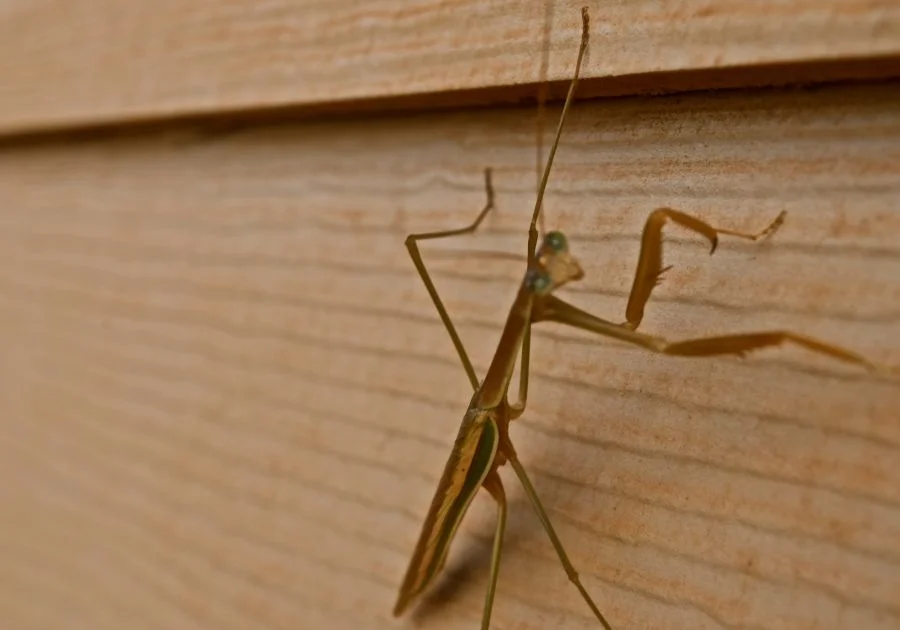
- Scientific Name: Phasmatodea
- Size: 1 to 12 inches
- Animal Type: Insect
- Diet Classification: Herbivore
- Where Found: Worldwide
The Stick Bug is an odd-looking insect and arthropod. Viewed from afar, it looks like a tiny stick.
It can be found all over the world except Antarctica, and its preferred habitats are temperate and tropical regions.
Some people like to keep insects as pets, and they can handle the stick bug once it has a comfortable environment to stay in.
It is not poisonous, though if it ever escapes where you kept it, it will be hard to find. The Stick Bug is a master of disguise.
25. Stoat

- Scientific Name: Mustela Erminea
- Size: 17 to 32 inches
- Animal Type: Mammal
- Diet Classification: Carnivore
- Where Found: Alaska, Canada
Stoats and weasels are related, and if you’ve ever come across a weasel—even on screens—you have a good idea what a Stoat looks like.
The Stoat is always slim and doesn’t eat so big due to its small fat reserve. It does need to eat a couple of hours a day, which makes it hunt a lot.
The Stoat preys on rodents, even those bigger than it. It also feeds on birds, fishes, shrews, lizards, amphibians, and insects.
The Stoat’s conservation status is considered Least Concern, though a lot of them get captured by humans for the fur.
26. Threadsnake
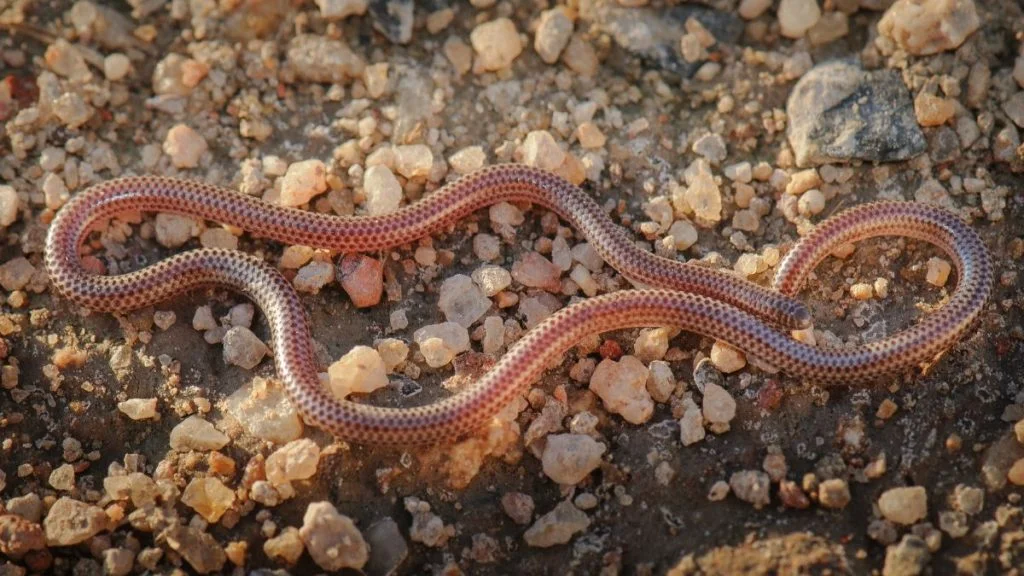
- Scientific Name: Leptotyphlops carlae
- Size: 10cm
- Animal Type: Reptile
- Diet Classification: Carnivore
- Where Found: Barbados
The Threadsnake is found only on the Island of Barbados and is considered the smallest snake species in existence.
Sadly, it is now an endangered species, mainly because of habitat loss in Barbados. It is fully called the Barbados Threadsnake.
The Threadsnake is also possibly the safest snake, as it contains no venom and it is blind. It is insectivorous and feeds on larvae and ant termites.
27. Ticks
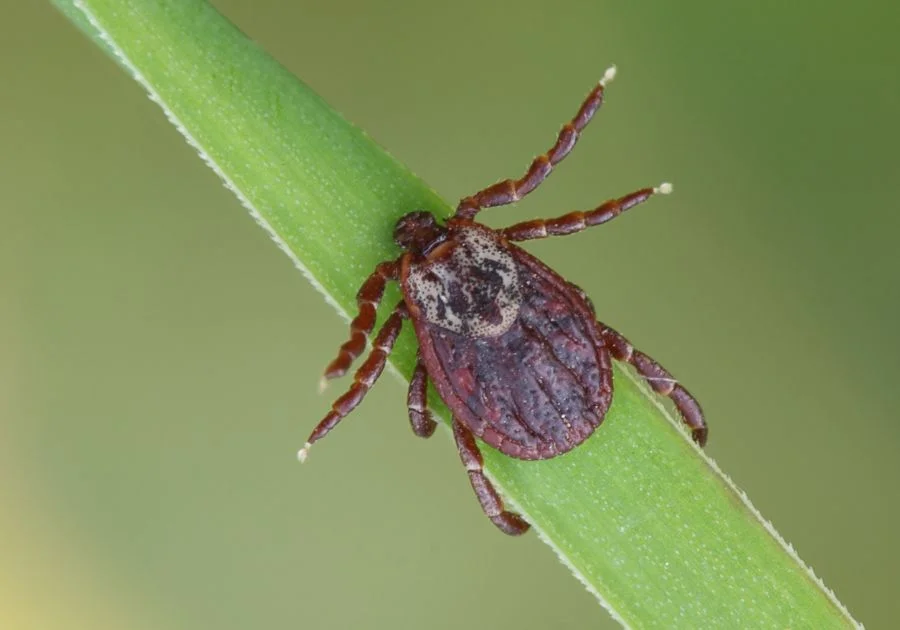
- Scientific Name: Ixodida
- Size: 2 to 6 mm
- Animal Type: Insect
- Diet Classification: Carnivore
- Where Found: Worldwide
The Tick might not look scary, but it isn’t anyone’s favorite arachnid, both on the human and animal sides.
The Tick is responsible for Lyme disease, a problem for humans. It can also cause Q fever, hemorrhagic fever, Heartland virus, and a host of others.
It is parasitic on animals too and is known to feed on the blood of animals like blood and deer.
Its small size helps it survive as it can’t easily be detected by its host.
28. Royal Antelope
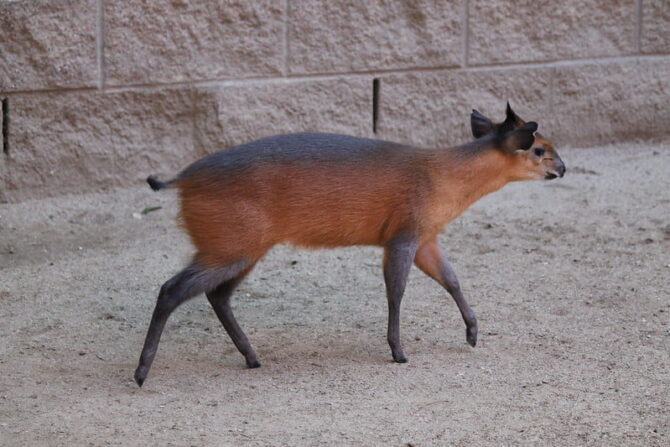
- Scientific Name: Neotragus pygmaeus
- Size: 50cm
- Animal Type: Mammal
- Diet Classification: Herbivore
- Where Found: Western Africa
The Royal Antelope is quite different from the standard antelope that you know, and it is regarded as the smallest antelope in the world.
It measures just 10 inches and weighs up to 6.6 pounds. Its distinguishing feature is its long legs, and it lives in West Africa.
The Royal Antelope’s preferred habitat is the forest, and as a herbivore, it simply preys on many other animals in its habitat.
Humans too hunt it for bushmeat, and in the face of danger, it adapted to protect itself. The Royal Antelope is monogamous.
29. Vechur Cow
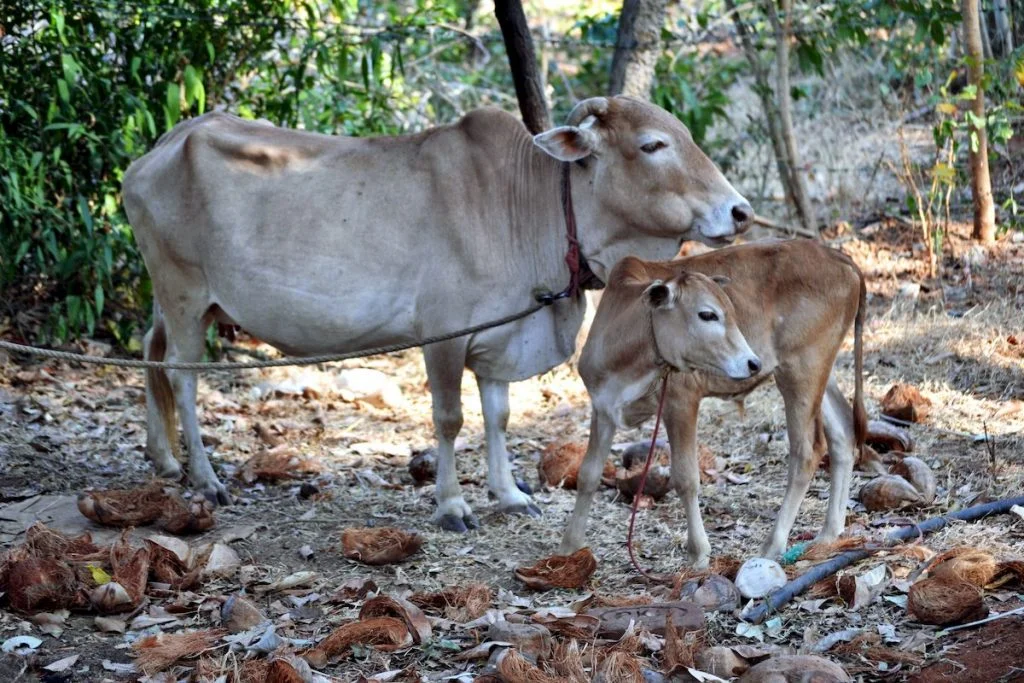
- Scientific Name: Bos Taurus Indicus
- Size: 124 cm
- Animal Type: Mammal
- Diet Classification: Herbivore
- Where Found: Kottoyam district
The vechur cow doesn’t look like your everyday cow (if you’ve gotten this far on our list, this shouldn’t be a surprise).
While cows tend to have a lot of fat, the Vechur cow is a lot like the biblical scrawny cattle.
It is also considered the world’s smallest cattle breed, and it is rare. There are only about 200 left in existence.
The Vechur Cow has few predators, but this specie dwindled in number due to crossbreeding. It is a herbivore and highly valued because of the milk it produces.
30. Weasel
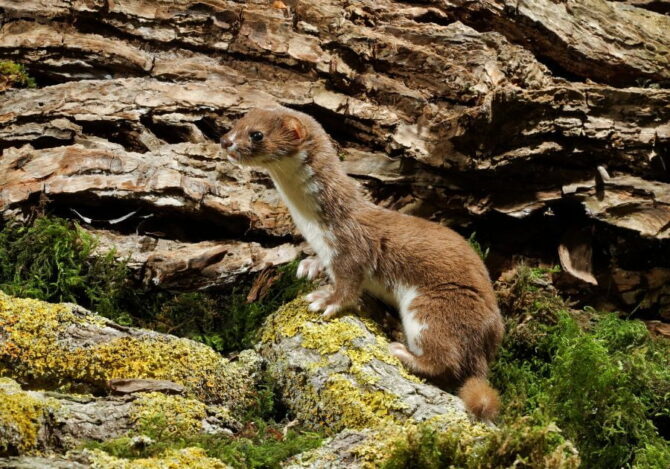
- Scientific Name: Mustela
- Size: 11 to 35 cm
- Animal Type: Mammal
- Diet Classification: Carnivore
- Where Found: Worldwide
The Weasel is one of the cutest skinny animals out there but more ferocious than meets the eye. It can be found worldwide.
In some places, it is considered a vermin because of its stealing habits. It isn’t uncommon for a weasel to steal a chicken or a rabbit.
However, many others won’t classify the weasel as a vermin because it also preys on rats. The weasel is a formidable hunter.
Final Thoughts on Slim Animals
Animals come in all shapes and sizes, but for them, a slim size isn’t simply for aesthetics.
Their survival often depends on their size, and many slim animals found themselves that way as a means of adapting to their environment.
Being skinny gives them many advantages. They easily navigate their habitat, be satisfied with little meals, hide from predators and be swifter in going after prey.
Know any other animals that are skinny? Share with us in the comments!
Check out these interesting articles:
- Types Of Wild Dogs: All 33 Wild Dog Species With Pictures
- 30 Animals With Long Tails (With Functions & Pictures)
Featured Image Credit: MaxLiew/Getty Images
